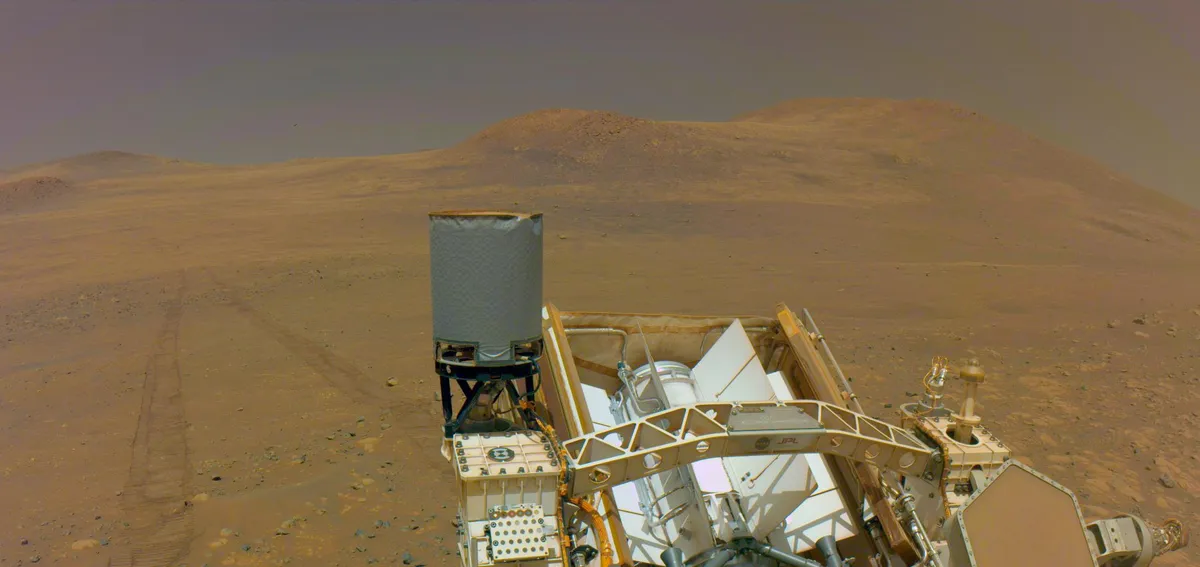
Scientists are turning their gaze towards a new area of interest on the lower slope of Jezero Crater’s rim, a region that could unveil some of the oldest rocks on Mars. NASA’s Perseverance Mars rover is currently exploring this intriguing new site, dubbed “Krokodillen,” which may provide valuable geological insights into the history of the Red Planet.
The Krokodillen region, which has been a key target for the Perseverance science team, marks a significant boundary between the ancient rocks of Jezero Crater’s rim and the plains that extend beyond it. According to Ken Farley, deputy project scientist for Perseverance from Caltech in Pasadena, “The last five months have been a geologic whirlwind.” He noted that while the exploration of “Witch Hazel Hill” has yielded remarkable results, the investigation of Krokodillen promises to be equally compelling.
Named after a mountain ridge on the island of Prins Karls Forland in Norway, Krokodillen—which translates to “the crocodile” in Norwegian—spans an area of 73 acres (approximately 30 hectares). It features rocky outcrops located downslope to the west and south of Witch Hazel Hill. Initial investigations of Krokodillen have already revealed the presence of clays within this ancient bedrock, hinting at the historical presence of liquid water.
The formation of clays requires liquid water, suggesting that Krokodillen could offer important clues regarding the habitability of early Mars. The identification of clays in this region could reinforce the theory that abundant liquid water existed long before Jezero Crater was formed by an asteroid impact. Clay minerals are also recognized on Earth for their ability to preserve organic compounds, which are considered the building blocks of life.
Farley emphasizes the significance of potential biosignatures found in this region, stating, “If we find a potential biosignature here, it would most likely be from an entirely different and much earlier epoch of Mars evolution than the one we found last year in the crater with ‘Cheyava Falls.’” This indicates the potential for discovering life forms that existed long ago, predating those identified in previous samples.
The rocks in Krokodillen are believed to have formed during Mars’ earliest geologic period, known as the Noachian, making them some of the oldest rocks on Mars. Data collected from NASA’s Mars orbiters suggest that the outer edges of Krokodillen may also harbor areas rich in olivine and carbonate. Olivine forms from magma, while carbonate minerals typically arise from reactions in liquid water involving rock and dissolved carbon dioxide. On Earth, carbonate minerals are recognized for their ability to preserve fossilized ancient microbial life and record ancient climatic conditions.
The Perseverance rover recently arrived at Krokodillen, implementing a new sampling strategy that allows it to leave some cored samples unsealed. This approach provides flexibility in case a more scientifically significant geologic feature is discovered in the future. To date, the rover has collected and sealed two regolith samples, three witness tubes, and one atmospheric sample, along with 26 rock cores—25 of which are sealed.
The most recent unsealed sample, named “Bell Island,” was taken on April 28 and contains small round stones known as spherules. If the science team determines that a new sample should replace it, the rover may be instructed to remove the tube from storage and discard the previous sample. “We have been exploring Mars for over four years,” said Katie Stack Morgan, acting project scientist for Perseverance at NASA’s Jet Propulsion Laboratory in Southern California. “Every single filled sample tube we have on board has its own unique and compelling story to tell.”
The new strategy allows for maximum flexibility as the team continues to gather diverse and intriguing rock samples. Before adopting this approach, the engineering sample team assessed potential risks associated with leaving a tube unsealed, concluding that the environment inside the rover meets strict cleanliness standards. This ensures that the likelihood of contamination is minimal, allowing for the collection of the most compelling samples when opportunities arise.
As the Perseverance rover embarks on this exciting journey at Krokodillen, scientists are hopeful that it will yield critical insights into the ancient geological history of Mars and potentially uncover evidence of past life on the planet.
For more information, please contact:
DC Agle
Jet Propulsion Laboratory, Pasadena, Calif.
818-393-9011
agle@jpl.nasa.gov
Karen Fox / Molly Wasser
NASA Headquarters, Washington
202-358-1600
karen.c.fox@nasa.gov / molly.l.wasser@nasa.gov